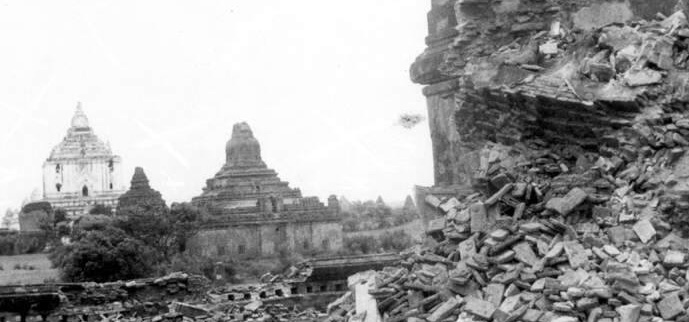YANGON—Exactly 44 years ago, an earthquake measuring 6.8 on the Richter scale rocked Bagan, damaging hundreds of pagodas and stupas.
Though the earthquake only lasted for a few seconds, the sounds of religious buildings collapsing continued for minutes, and dust filled the sky.
Hundreds of Buddhist temples including Bupaya Pagoda, Manuha Temple, Ananda Temple, Shwezigon Pagoda, Thatbyinnyu Pagoda and Lawkananda Pagoda were damaged by the earthquake, which also killed two people and injured 15 others.
According to Bagan resident and renowned archaeologist U Mon Bo Ke, the earthquake damaged around 15 percent of pagodas in Bagan, 5 percent of which dated back to the Bagan period, while the remainder were renovated in the Ava and Konbaung periods.
Bagan was hit by another powerful 6.8 magnitude earthquake on Aug. 24, 2016, in which some 389 pagodas and temples out of a total of 3,252 in Bagan were damaged.
Bagan, the country’s major tourist attraction, is home to pagodas and temples dating from the 9th to the 13th centuries—a period in which some 50 Buddhist kings ruled the Pagan Dynasty.
On July 6 this year, UNESCO inscribed Bagan as a World Heritage Site. The decision was announced at the ongoing 43rd World Heritage Committee session in Baku, Azerbaijan.

















